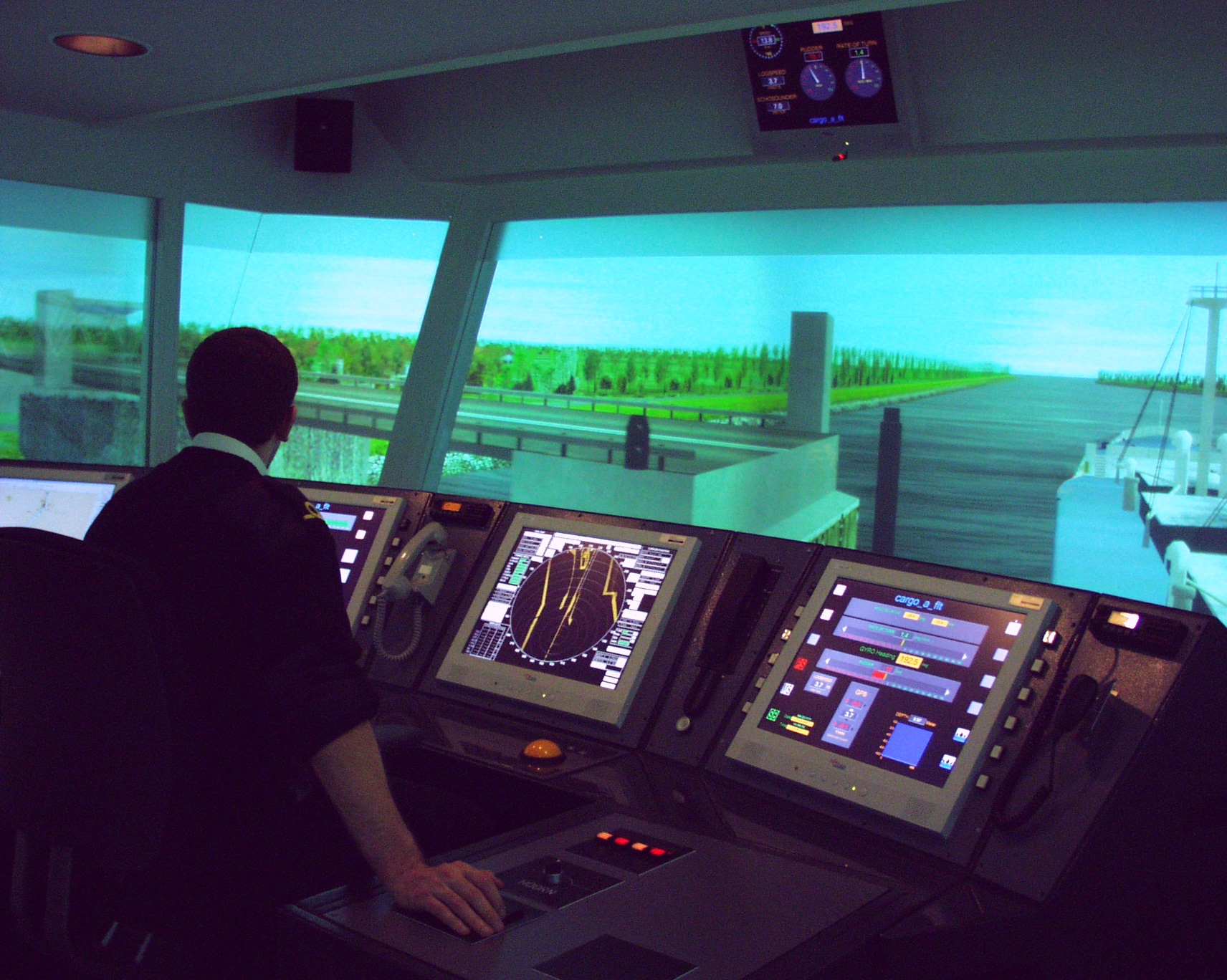



This website is not updated anymore, please log on to this website (Knowledge Centre Manoeuvring in Shallow and Confined Water) for the latest news.
Two experimental facilities are used in this project:
The shallow water towing tank is used to gather all necessary data. The ship manoeuvring simulator is used to validate the results of the research (at the final stage).
The Towing Tank for Manoeuvres in Shallow Water is accepted as a member organisation of the ITTC (International Towing Tank Conference) since 1993.
| Main properties: | ||
| Length over all | 88.0 m | |
| Useful length | 67.0 m | |
| Width | 7.0 m |
The rails on which the carriage moves are aligned with high accuracy: the level difference of both rails and the lateral deflection of the guiding rail are less than 0.5 mm.
The main carriage is a rectangular frame, composed of two wheel girders, connected by two box girders. A lateral carriage is guided between the transversal girders and carries a slide in which a yawing table is incorporated. This slide can be positioned in vertical sense over 0.4 m to take account of the water level.
The ship model is connected to the carriage by means of a mechanism which allows free heave and pitch; roll can be restrained or free. In the horizontal plane, a rigid connection is provided.

In order to carry out ship-ship interaction tests, the tank is equipped with an auxiliary carriage allowing a second ship model to perform a prescribed speed history along a straight trajectory, with a maximum speed of 1.2 m/s.
The three motion modes, the wave generator, rudder, propulsion, the auxiliary carriage and other external devices are controlled by a PC and six DIOCs (Direct Input Output Control).
The control system allows unmanned operation, experiments can be executed in a fully automatic way. Maximum 35 tests a day can be carried out. An average of 25 "good" tests is obtained.
topTwo full bridge simulators for research and training could be used:
A full bridge simulator consists of

The navigator (pilot, captain, trainee) has to perform an imposed manoeuvre. From the bridge the ship's behaviour can be monitored on the bridge instruments and through the bridge windows. By changing rudder and telegraph settings, and by giving orders to tug masters, the navigator controls the observed ship behaviour. By setting telegraph and rudder tiller, electrical signals are transmitted to the simulation computer where the balance of all forces on the ship is calculated. This results in a continuous update of ship's acceleration, speed and position. Signals are sent to the bridge in order to display this information on the instruments. The radar, ECDIS and outside view are also continuously updated in real time.
All this is meant to give the navigator the impression of being in charge of a real ship, to make him/her act as natural as possible while executing the manoeuvre.
The human aspect of navigation is so important that the human being is the only element which is not schematised. It is necessary to take account of the navigator's experience, but also of the human reactions on ship and environment, which are not always logical or predictable.
 top
top